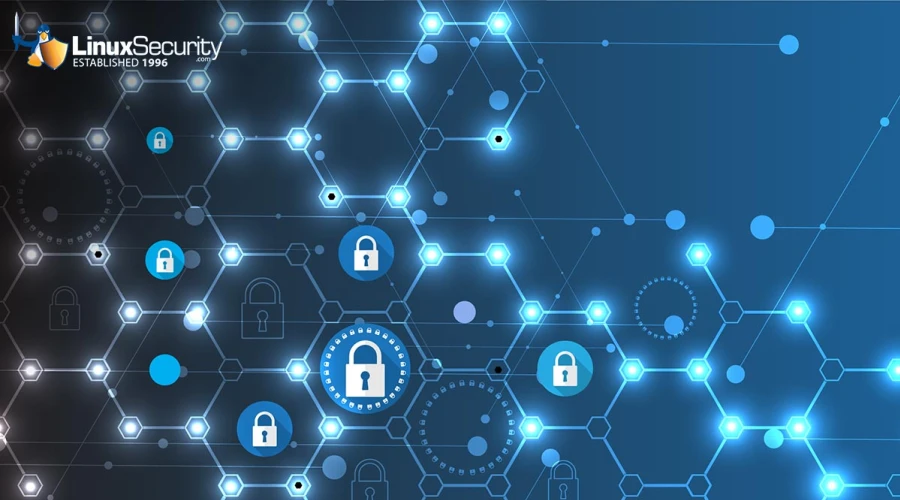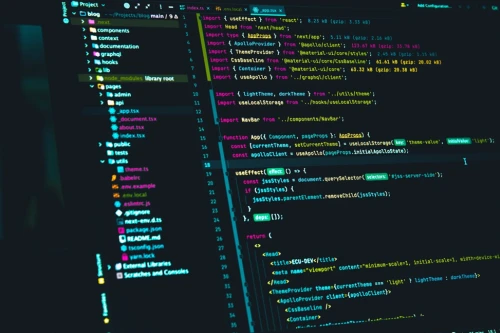Docker Container Security Vulnerability Management &Testing

In the dynamic landscape of contemporary software development, Docker containerization has emerged as a cornerstone, facilitating the efficient deployment and scaling of applications. However, fortifying their security measures becomes paramount as organizations increasingly embrace Docker containers.
This necessitates a comprehensive approach to Docker Container Security Vulnerability Management and Testing, incorporating industry best practices. Since security is not a universal concept, container security best practices offer a comprehensive framework that spans the entire software development lifecycle, from creating secure container images to runtime protection. Below is a complete guide on Docker container security vulnerability management and testing.
Container Security and The Importance of Integrating Security Testing and Automated Deployment
Container security refers to measures to secure the entire containerized application development and deployment process. This includes securing the container runtime, orchestration tools, and images. Integrating security testing and automated deployment into the container lifecycle is crucial to identify and mitigate vulnerabilities early in development.
Security testing involves assessing the security posture of containerized applications through vulnerability scanning, penetration testing, and static code analysis. Automated deployment ensures a streamlined and consistent process for deploying containerized applications across different environments.
Understanding Container Security Testing and Deployment Automation
 Container orchestrators, exemplified by prominent platforms such as Kubernetes, play a pivotal role in shaping the security landscape of containerized environments. These orchestrators are the backbone, providing a robust framework for managing, scaling, and orchestrating containerized applications. In the security realm, container orchestrators contribute significantly by offering advanced features and tools that bolster the overall protection of containerized ecosystems.
Container orchestrators, exemplified by prominent platforms such as Kubernetes, play a pivotal role in shaping the security landscape of containerized environments. These orchestrators are the backbone, providing a robust framework for managing, scaling, and orchestrating containerized applications. In the security realm, container orchestrators contribute significantly by offering advanced features and tools that bolster the overall protection of containerized ecosystems.
One fundamental security feature container orchestrators provide is Role-Based Access Control (RBAC). Kubernetes, for instance, offers a sophisticated RBAC system that enables organizations to define fine-grained access policies. By implementing RBAC best practices, organizations can ensure that users and processes within the container orchestration platform adhere to the principle of least privilege. This not only enhances security but also fosters a structured and controlled environment.
Container orchestrators also offer comprehensive hardening guides and security checklists. Kubernetes, for instance, provides a detailed hardening guide that outlines best practices for securing various components of the orchestrator. This includes securing the control plane, worker nodes, and associated components. Security checklists offered by orchestrators act as practical guides for administrators, helping them configure and manage the environment with security in mind.
In addition to RBAC, container orchestrators implement network policies to enhance security. These policies dictate communication rules between containers, ensuring only authorized interactions occur. By segmenting the network, orchestrators reduce the attack surface, limiting the potential impact of security breaches.
Container orchestrators are designed with security in mind, providing an array of features to safeguard the deployment and runtime of containerized applications. They facilitate the implementation of security standards and best practices, guiding organizations in fortifying their container environments against potential threats.
As container orchestrators manage the deployment and scaling of applications, they inherently contribute to security testing and deployment automation. Integration with CI/CD pipelines ensures that security testing becomes integral to the application delivery process. Security checks can be automated at different stages, from the creation of container images to their deployment in a production environment.
What Is The Role of Container Orchestrator in Security Testing and Deployment Automation?
Container orchestrators play a crucial role in managing and scaling containerized applications. These orchestrators also contribute to security testing and deployment automation by providing features that enhance the overall security posture of containerized environments.
One key security feature provided by container orchestrators is network segmentation. By isolating containers into separate network segments, orchestrators prevent unauthorized container communication, reducing the attack surface.
Additionally, orchestrators often include features for secrets management, allowing developers to securely store and manage sensitive information, such as API keys and passwords. This helps prevent security breaches arising from the exposure of sensitive data within containerized applications.
Linux Container Vulnerability Management
Linux container vulnerability management is a critical aspect of securing containerized environments. As containers share the host operating system's kernel, keeping the underlying Linux system secure is paramount. Regularly updating the host operating system and its components is fundamental to mitigating known vulnerabilities and maintaining a robust security posture.
Vulnerability management tools, including OpenSCAP and Nessus, scan the Linux host for potential security risks. Proactive measures involve monitoring security advisories, subscribing to relevant mailing lists, and staying informed about the latest patches. By addressing vulnerabilities at the operating system level, organizations bolster the overall security of their containerized applications, creating a foundation for a resilient and protected container environment.
Docker Container Security Testing
Docker, a widely used containerization platform, requires specific attention to security testing. Docker container security testing involves examining various aspects of the Docker ecosystem, including the Docker daemon, container images, and the Docker API.
One crucial aspect of Docker security testing is ensuring the integrity of container images. Developers should verify the authenticity and origin of container images to prevent the deployment of compromised or malicious images. Implementing image signing and verification mechanisms, such as Docker Content Trust (DCT), adds more security to container images.
In addition to image integrity, Docker security testing should focus on securing the Docker daemon. Access controls, network policies, and secure configuration settings are essential to prevent unauthorized access and potential exploitation of vulnerabilities in the Docker daemon.
What Is The Role of Automation in Container Security?
 Automation is integral to adequate container security, allowing organizations to scale security processes, reduce human error, and respond swiftly to emerging threats. Automated security processes can be incorporated at various stages of the container lifecycle, from image build to deployment and runtime monitoring.
Automation is integral to adequate container security, allowing organizations to scale security processes, reduce human error, and respond swiftly to emerging threats. Automated security processes can be incorporated at various stages of the container lifecycle, from image build to deployment and runtime monitoring.
Automated vulnerability scanning ensures that container images are regularly scanned for known vulnerabilities, and security teams receive immediate feedback on potential risks. This proactive approach enables developers to address vulnerabilities early in development, minimizing the exposure window.
Access control and permission management automation help enforce the principle of least privilege, reducing the risk of unauthorized access and potential security breaches. Role-based access control (RBAC) mechanisms provided by container orchestration platforms enable fine-grained control over user permissions.
Continuous monitoring and automated threat detection contribute to runtime security. Tools that monitor container behavior and detect anomalous activities help organizations identify and respond to security incidents in real-time.
Practical Approaches to Integrate Security Testing and Automate Deployment
Integrating security testing and automating deployment requires a strategic and collaborative approach within development and operations teams. Here are practical approaches to seamlessly embed security into the container development and deployment lifecycle:
- Incorporate security into CI/CD pipelines: Integrate security testing tools into CI/CD pipelines to automatically scan container images for vulnerabilities during the build process. This ensures that security checks are part of the automated deployment workflow.
- Automate compliance checks: Implement automated tools to check and enforce compliance with security policies and industry regulations. This includes scanning container images for compliance with security benchmarks and standards.
- Implement infrastructure as code (IaC): Use IaC tools like Terraform or Ansible to define and provision infrastructure in a repeatable and consistent manner. This ensures that security configurations are applied consistently across different environments.
- Security training for development teams: Provide security training to development teams to raise awareness about secure coding practices and potential security risks in containerized environments. Empowering developers with security knowledge enhances their ability to write secure code from the outset.
- Use secure base images: Start with secure images with minimal attack surfaces. Regularly update these base images to include the latest security patches. Tools like Docker Bench for Security can be used to check the security configuration of Docker hosts.
- Implement image scanning in registries: Utilize container image registries that support image scanning for vulnerabilities. This adds an extra layer of security by automatically scanning images before they are deployed, preventing the use of compromised images.
- Container runtime security: Implement runtime security measures, such as container network policies and runtime monitoring, to detect and respond to security incidents during the execution of containerized applications.
- Collaborate across teams: Foster collaboration between development, operations, and security teams to ensure a holistic approach to container security. Regular communication and knowledge sharing help address security concerns at every stage of development.
Future Trends in Container Security Testing and Deployment Automation
 As technology evolves, so do the challenges and solutions in container security. Several trends are likely to shape the future of container security testing and deployment automation:
As technology evolves, so do the challenges and solutions in container security. Several trends are likely to shape the future of container security testing and deployment automation:
- Shift left security: The trend of shifting security left in the development lifecycle will continue to gain prominence. Embedding security testing early in the development process allows for identifying and remedying vulnerabilities before they reach production.
- Enhanced orchestration security: Container orchestrators will continue to enhance their built-in security features, providing more robust tools for network segmentation, access controls, and secrets management. This will contribute to a more secure and manageable container environment.
- Integration of artificial intelligence (AI) and machine learning (ML): AI and ML technologies will significantly improve threat detection and response in containerized environments. Automated anomaly detection and intelligent security analytics will become crucial for identifying sophisticated attacks.
- DevSecOps adoption: The DevSecOps paradigm integrates security into the DevOps workflow and will become more mainstream. Collaboration between development, operations, and security teams will be further strengthened to ensure a holistic and continuous approach to security.
- Immutable infrastructure: The concept of immutable infrastructure, which is treated as code and cannot be modified after deployment, will continue gaining traction. This approach reduces the attack surface and ensures consistency in the environment.
- Zero trust security model: Adopting a Zero Trust security model, where no entity, whether inside or outside the network, is trusted by default, will become more prevalent. This model aligns with the dynamic and distributed nature of containerized applications.
- Compliance as code: Compliance requirements will be increasingly addressed through code, using tools and frameworks that enable organizations to define, enforce, and audit compliance as part of their automated workflows.
- Container-native security solutions: Security solutions designed explicitly for containerized environments will continue to emerge. These solutions will provide specialized features to address containers' unique security challenges.
Final Thoughts on the Importance of Docker Container Security Testing
In an era where software development is becoming faster and more dynamic, the importance of robust security measures cannot be overstated. Docker container security testing is not merely a compliance checkbox but a critical aspect of building and deploying resilient applications.
By integrating security testing and automation into the container development lifecycle, organizations can identify and remediate vulnerabilities early, reducing the risk of security breaches. The collaboration between development, operations, and security teams is pivotal in establishing a culture of security that permeates every stage of the containerized application lifecycle.
As container technologies evolve, staying informed about emerging security trends and adopting best practices will be essential for organizations aiming to build and maintain secure container environments. The future of container security lies in proactive, automated, and collaborative approaches that prioritize the protection of applications and data in an increasingly complex digital landscape.





















